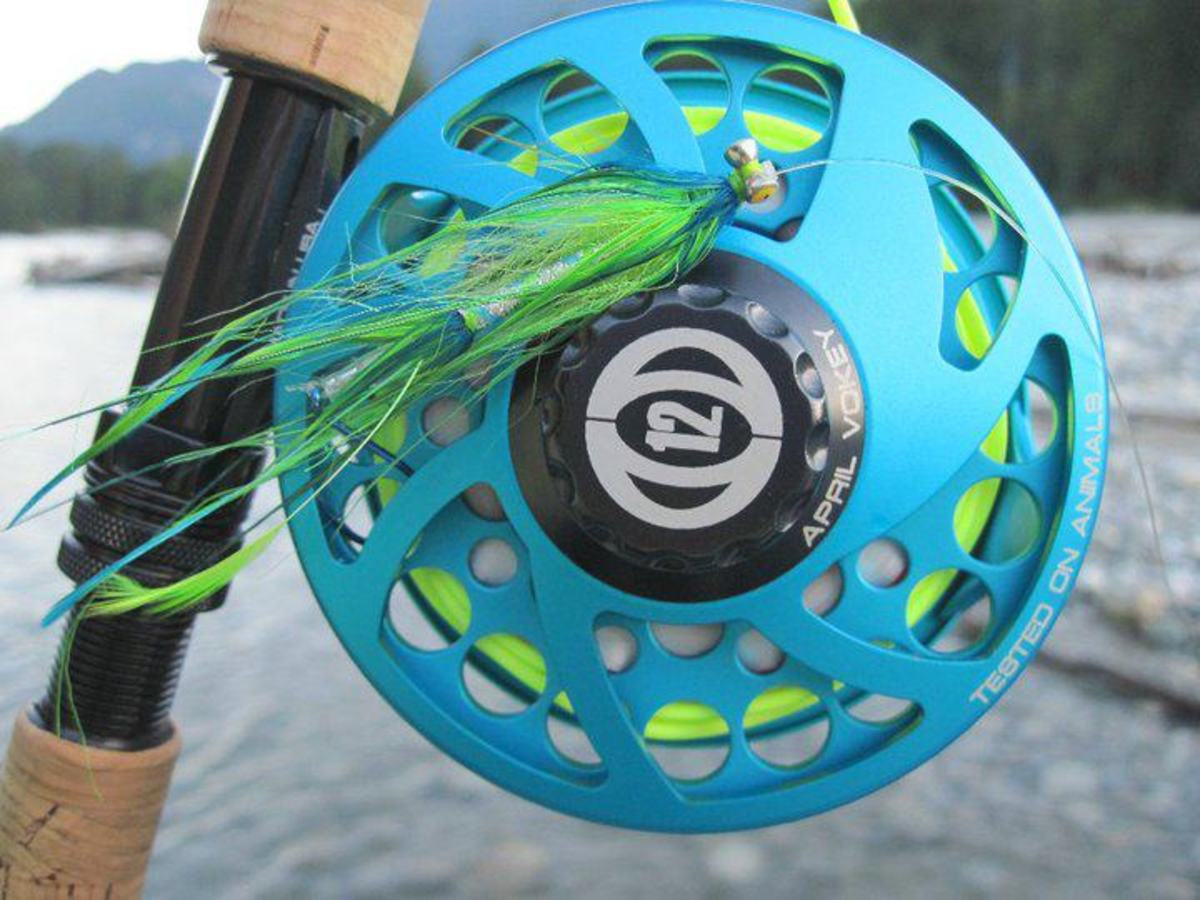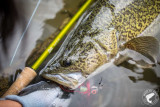
The first Spey line I ever purchased came packaged in a box as thick as an encyclopaedia. At the time, I had just become the proud owner of the easiest Spey line on the market to cast: the Windcutter. The kit included the fifty-five foot long mid-belly line (already fused to an integrated running line) and a series of fifteen foot sink tips in a compact wallet with a cardboard cut-out to explain the different sink rates.
As a new caster, my casting stroke was unsightly; I imitated a flailing backwoodsman trying to chop liquid wood with a piece of graphite. It was horrifying. It was soon thereafter that the popularized Skagit shooting head hit the scene and nothing was ever the same.
Half the length of the Windcutter, the short condensed head allowed anglers the option of turning over heavy sink tips and large flies with ease, especially in areas with limited back-casting space. This particular line was developed in the Pacific Northwest and is specifically made to be cast with a sink tip on its thickly tapered end (to avoid having its anchor ripped from the water’s surface before the rod has loaded).
As a general rule, a sink tip should not be longer than the rod being fished, making most tips somewhere between eleven to fifteen feet long.
The Skagit line, while deemed the more simple of the line categories to cast, is one that is a blessing to many of us who guide. New casters easily adapt to the stroke of the short line, and are able to keep their time on the water more efficient because their fly remains in the water and out of the bushes behind them.
As a new caster myself, I was elated. I dusted off my old lead-core lines and began to make my own cost-efficient systems. I wasn’t alone in my ventures. Shops were soon selling homemade tungsten tips in various sink rates/lengths (labeled as T7, T11 or T14), as well as selling the RIO pre-made tip systems (labeled as Type 3, Type 6 or Type 8).
To many customers, the differentiation between the two was unclear. For some, it was the simple fact that both systems were named with words beginning with the letter ’T’. Others expressed confusion regarding each tip’s relation to depth and density.
When RIO released a combination of the MOW (McCune, O’Donnell, Ward) tip system alongside T17 and fused looped tungsten systems, we had widespread confusion. RIO was selling four different tip systems, and people were lost. Admittedly, the systems are self-explanatory to those who use them regularly, but it was intimidating to newer people in the Spey game.
I reached out to Simon Gawesworth of RIO to clarify the mystification, and have simplified the four available systems here for you.
System One – 15 Foot ‘Type’ Tips
The original fifteen foot tips come with a color coded welded loop that indicates the tips’ density (or in this case, sink rate) and the weight of the rod/line weight it should be used on. The heaviest tip (type 8) is thinner than the lightest tip (type 3), thus fighting less water resistance and sinking faster. These tips are tapered and allow for a much better presentation than their level tungsten relatives.
They come in the following:
- Floating
- Intermediate (1.5 to 2 inches per second)
- Type 3/Yellow (3 to 4 inches per second)
- Type 6/Grey (6 to 7 inches per second)
- Type 8/Green (8 to 9 inches per second)
To ensure a balanced outfit, each tip is given a standard weight (measured in grains) per weight class of rod.
For example, all #10 weight tips weigh 150 grains regardless of which of the above ‘types’ they are, so the angler has the option of changing their tip density (depth) without losing the line weight necessary to load the rod efficiently.
(#8 = 109 grains, #9 = 129 grains, #10 = 150 grains, #11 = 166 grains).
System Two – 10 Foot ‘Type’ Tips
These are simply a shorter version of the fifteen foot tips. They are ideal for shorter rods, tight casting situations, or smaller rivers. The density options are the same as the fifteen foot tips listed above.
System 3 – Level ’T’ (Tungsten) Tips
These tips are level (non-tapered), fast sinking, and designed to be cut to a desired length. Their lack of taper delivers them with a “punch”, so large flies roll over without much effort from the caster.
Quite opposite to the density of the ‘Type’ tips above, these lines sink as per the amount of grain weight they have per foot. This equates to the amount of tungsten impregnated into each foot of the tip (example, T8 weighs eight grains per foot).
- T8/White (6 to 7 inches per second)
- T11/Green (7 to 8 inches per second)
- T14/Blue (8 to 9 inches per second)
- T17/Black (9 to 10 inches per second)
- T20/none (+10 inches per second)
System 4 – MOW Tips (McCune, O’Donnell, and Ward)
Available in ten and twelve foot lengths, the Mow tips come in “light”, “medium”, “heavy” and “extra heavy” ratings. They are of the same tungsten material as the ’T’ tips. They translate to:
- Light = T8/White
- Medium = T11/Green
- Heavy = T14/Blue
- Extra Heavy = T17/Gray
So what’s the difference between the MOW and the ’T’ tips? There are times when an angler is looking to specifically sink their fly into pocket-water, or behind structure without the use of a full tip. At times, only a mere two feet of sinking line is needed. The dilemma is that a two foot sink tip won’t allow the short, compact anatomy of a Skagit line to cast properly.
The MOW tips feature six different tips with differing lengths of sinking sections seamlessly fused to a floating line. Each of the below blended tips is available in the light, medium, heavy or extra heavy as mentioned above.
- 10 ft Floating
- 7.5 ft Float/2.5 ft Sink
- 5 ft Float/5 ft Sink
- 2.5 ft Float/7.5 ft Sink
- 10 ft Sink
- 12 ft Sink
When trying to determine whether your rod will cast best with a light, medium, heavy or extra heavy class, the RIO recommendations are that:
- Light tips are ideal for Skagit lines of 475 grains and lighter
- Medium tips are ideal for Skagit lines between 475 and 575 grains
- Heavy tips are ideal for Skagit lines between 575 and 700 grains-
- Extra Heavy tips are ideal for Skagit lines heavier than 700 grains, or for when large heavy flies are used.
Truthfully, a person could spend a lifetime trying to analyze every line and system on the market today, or you can just find one that simply works for you and go fishing instead.








